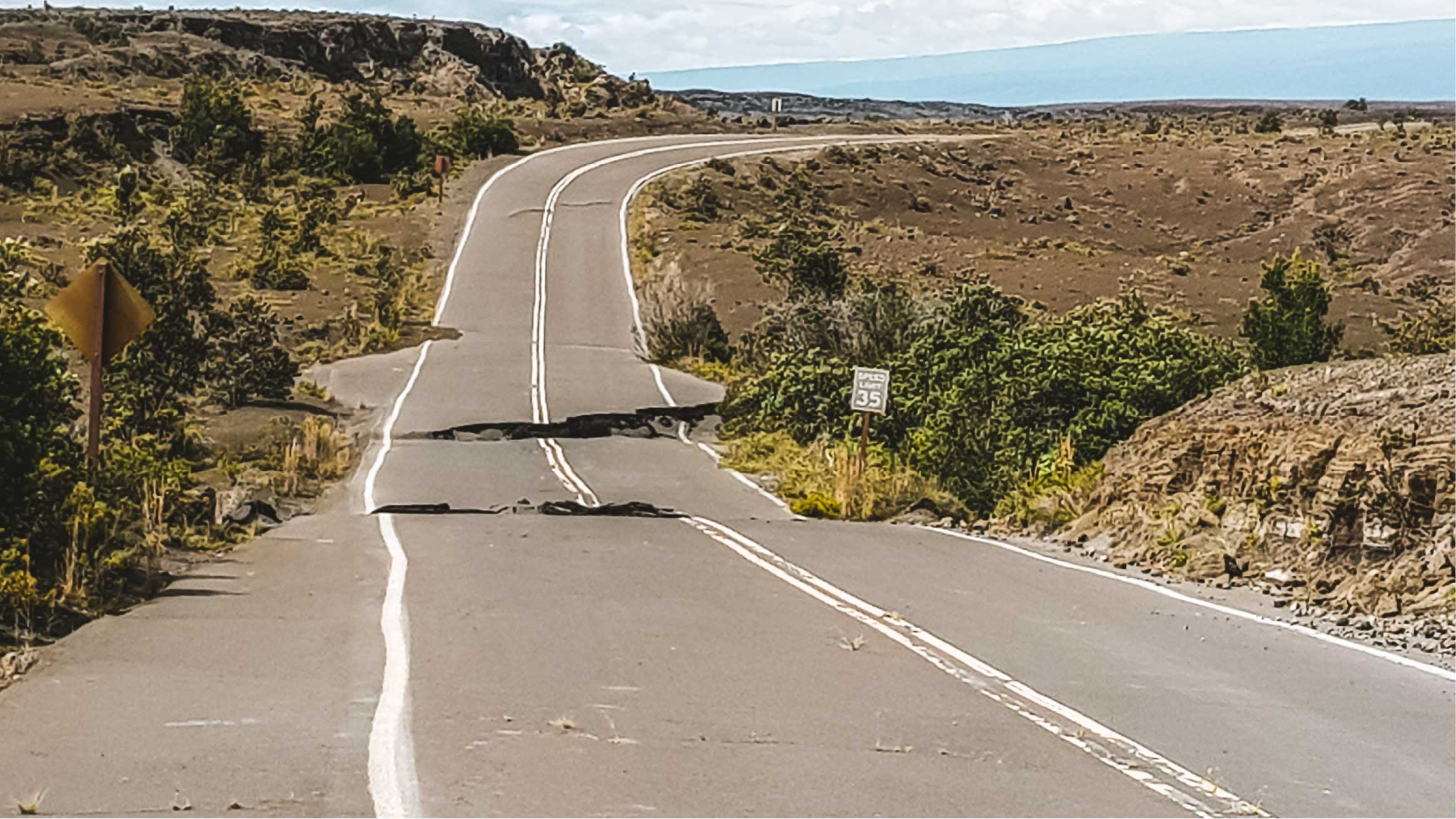
Earthquake preparedness for Bay Area businesses: A commercial guide to building safety
Commercial earthquake preparedness is critically important, especially in a city like San Francisco with its long history of earthquake events.
While earthquake risk is nothing new to Bay Area residents and families, preparing for that threat requires a different set of criteria when you’re a business owner.
This guide will review the dangers earthquakes pose to building safety, look at why earthquake protection is critical, and explore best practices when preparing and responding to earthquake emergencies.
Understanding earthquake risk for Bay Area businesses
Earthquakes are common in the Bay Area because of tectonic activity that stretches back millions of years. When the North American plate and the Pacific plate began colliding 25–30 million years ago under what is now the West coast of the US, it formed an active series of faults known as the San Andreas fault zone. The quantity and specific geologic condition of these faults have resulted in more tectonic activity, and thus more earthquakes.
This geologic reality has played a large role in the history of the region, and the story of San Francisco cannot be told without mentioning the physical and economic impact of the earthquakes.
According to the Association of Bay Area Governments, since 1836, the region has experienced 22 earthquakes of a magnitude 6 or greater. However, that activity hasn’t occurred evenly over time, with 18 of those earthquakes occurring between 1836 and 1911. There was a “quiet period” between 1911 and 1979, when no major earthquakes struck, but since 1979, there have been four earthquakes of magnitude 6 or greater.
Scientists and geologists are concerned that a new era of major earthquake activity, or clustering, began in 1979. If similar to the seismic activity experienced between 1836-1911, it could portend a large earthquake event. One estimate puts the probability of a magnitude 7 earthquake in the next 30 years at 75%.
The economic damage from any of those major earthquakes can be severe and lasting, especially for commercial businesses.
For example, the 1989 Loma Prieta earthquake with a magnitude 6.9 caused an estimated $10 billion in economic damages and business interruption, in addition to physically damaging over 2,500 businesses.
Why commercial earthquake preparedness matters
Earthquakes are a familiar threat to the Bay Area, and so is disaster preparedness. Your business is prepared when you understand the economic and operational risks. State and local governments are a trove of information in this case, and they regularly prepare risk assessments.
The Bay Area Earthquake Plan (BAEP), for example, predicts the potential damage a major earthquake along the northern California coast would cause, and what a response plan will entail.
The impact of a severe earthquake could include:
- Structural damage to as many as 10,000 commercial buildings
- Damaged water utility pipelines and facilities, resulting in interrupted supply and loss of service
- Power outages due to damage to the Bay Area electrical infrastructure; power could be unavailable for weeks in some communities
- Landline and cellular telephone systems may not work for the first few days post-event due to system overload and damage to infrastructure
Considering this lasting business damage, insurance is another essential commercial earthquake preparedness step.
Typically, commercial property insurance does not include earthquake insurance, and property owners have to purchase separate earthquake coverage.
The cost of earthquake insurance depends on the property’s location, age, and construction type, along with the deductible and replacement values.
Typical earthquake deductibles in California can range from 10% to 20% of replacement value, so commercial property owners need to weigh the potential costs of damage and disruption to your business against the cost of insurance to find the coverage that makes the most sense.
Building safety measures for earthquake protection
Protecting your commercial building from earthquake damage may include taking additional safety steps.
One way to ensure your commercial building can withstand seismic activity is through retrofitting. Retrofitting is the addition of new technology or features to older systems. It helps maintain performance as safety codes, environmental factors, and efficiency standards change over time.
Retrofit projects vary in size and complexity. A simple retrofit would be bracing a water heater. More complicated projects include unreinforced masonry walls, inadequate wall anchorage, non-ductile concrete walls and columns, and steel frame buildings.
Keep these tips in mind when you’re considering a retrofit of any size:
- Clearly define the scope of work so that you understand precisely what work is required
- Consult with a licensed engineer, architect, or general contractor who has expertise in this type of work and who can help you determine the best solution
- Reach out to the local building department for current building codes, standards, and to obtain the necessary permits
Another way to maintain your building’s safety is with structural and non-structural improvements.
Structural safety improvements focus on the load-bearing components of a building, such as walls, foundations, roofs, and exterior cladding and signage. These core elements are instrumental to structural stability and integrity.
Non-structural components don’t contribute to the load-bearing performance of a building but are common and often critical parts of a building’s overall functionality. This includes doors, windows, HVAC systems, partition walls, shelving, storage, business equipment, and similar.
Improving the safety of structural components often requires retrofitting, as discussed earlier. Non-structural elements typically require proper securing, connection flexibility, and anchoring.
Emergency preparedness plans for Bay Area businesses
Strong safety preparation in a city like San Francisco includes an earthquake response plan and proper emergency supplies.
Protect your staff by dedicating time and energy crafting a comprehensive earthquake response plan.

The size and location of your businesses will dictate certain specifics, but a typical response plan should include:
- Emergency procedures for what to do during an earthquake
- Protocols for once the shaking has subsided
- An evacuation plan that accounts for every employee and the entire building
- A staff-led safety team with well-defined roles and responsibilities
- A communication plan for post-earthquake information collecting and sharing
- Ample staff training, drills, and regular review
- Security systems that can help you stay prepared: fire alarms and monitoring, burglar alarms, and video security
The post-earthquake conditions of a commercial building are impossible to predict, but having the right emergency supplies on-site can go a long way towards keeping staff healthy and safe.
Consider building an emergency supply checklist with some or all of the following:
- First aid kits
- Drinking water
- Non-perishable food
- Flashlights and extra batteries
- Walkie-talkies
- Fire extinguishers
- Blankets
- Tents or tarps
- Emergency signage
San Francisco and Bay Area-specific earthquake regulations
The theme of this guide is natural disaster preparedness. As a business owner in San Francisco, you can’t control earthquakes, but you can control your preparation level for when one hits.
A major part of disaster preparedness is staying connected to earthquake-related developments and adhering to local building codes and compliance regulations. Most importantly, this can help protect lives, but also safeguard property and assets from damage, improve the likelihood of full insurance coverage, and mitigate the legal and financial risks from compliance failure.
An up-to-code business is better positioned to maintain business continuity post-earthquake, thanks to reinforced infrastructure and emergency planning that helps minimize operational downtime and enables a quicker recovery.
Here are some earthquake-related resources for commercial property owners in San Francisco and the Bay Area:
- Commercial Property Owner’s Guide to Earthquake Safety
- City of San Francisco’s Earthquake Safety Implementation Program
- California Building Standards Commission
- San Francisco earthquake preparedness
- California’s Seismic Safety Commission
- California Governor’s Office of Emergency Services
Security systems for earthquake-related risks
As we mentioned earlier, a good earthquake preparedness plan will include security systems that can help you stay prepared for an emergency and post-emergency.
Immediately after an earthquake, new or expanded security threats can overwhelm affected communities. Businesses can help temper their impact with appropriate surveillance and alarm systems.
After a few weeks, the number of vacant and abandoned properties can dramatically increase, leading to more vandalism and theft. Professional video security services can help protect your property and people in this situation—with such features as remote monitoring, automatic police notifications, solar power, cloud-based video storage, and others.
Depending on your business needs and risks, commercial property owners may look into a live video monitoring system that actively prevents crime by combining advanced security technology with 24/7 professional support. It relies on both human experts and technology to keep your business secure.
Fire is another major threat post-earthquake. Downed electrical wires and equipment can spark, and fire can quickly spread among debris and loose material. That’s why a high-quality, comprehensive fire alarm system should be included in any earthquake preparedness plans.
Proactive preparation
In San Francisco and the Bay Area, proactive earthquake preparedness is more than common sense, it’s smart business. A business that emphasizes strategic earthquake planning will greatly enhance its ability to protect lives, maintain continuity, and recover quickly from an unexpected seismic event.
For help implementing a proactive security plan, choose an experienced security provider and find a solution that protects you before, during, and after an earthquake.

